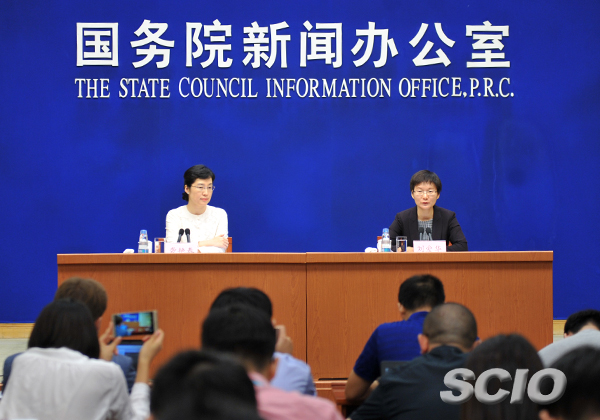China's industrial output up 6 pct. in August
China's industrial output slowed in August, while investment and retail sales both saw a slight growth. The slower growth can be attributed to the government's fresh efforts to cut industrial overcapacity and the hot weather, said Liu Aihua, a spokesperson for the National Bureau of Statistics.
|
|
|
The State Council Information Office holds a press conference on China's economic performance in August on Sept. 14. [Photo/China SCIO] |
The country's value-added industrial output, an important economic indicator, grew by 6 percent in August compared to last year, down from the 6.4 percent in July, data from the National Bureau of Statistics (NBS) showed on Sept. 14.
On a monthly basis, industrial output in August rose 0.46 percent.
Fixed-asset investment, or spending on infrastructure and property, grew 7.8 percent year-on-year in the first eight months of this year, moderating from an 8.3 percent increase over the January-July period.
Retail sales rose by 10.1 percent in August from a year earlier, cooling from July's 10.4 percent pace, as China is trying to shift its economy toward a growth model driven by consumer spending, innovation and services, while weaning it off an over-reliance on exports and investment.
Growth of private investment slowed to 6.4 percent in January-August from 6.9 percent in the first seven months of the year, suggesting small- and medium-sized private firms still face challenges in accessing financing.
Private investment accounts for about 60 percent of overall investment in China.
The government is targeting an annual economic growth of around 6.5 percent this year, down from the 6.7-percent pace seen in 2016.
In the first half of the year, the economy grew at a 6.9 percent year-on-year pace.
Liu said that Chinese economy remained on a steady and improving trend.
